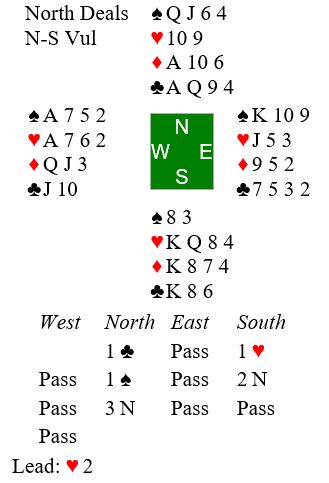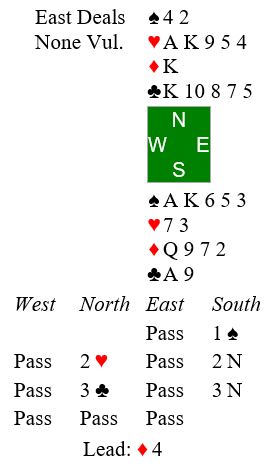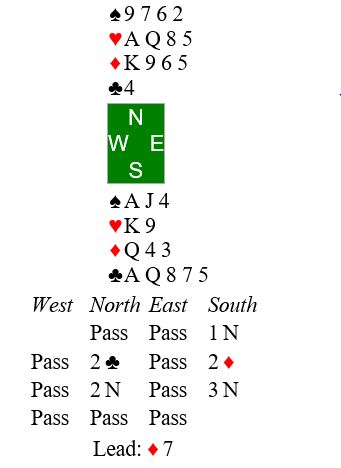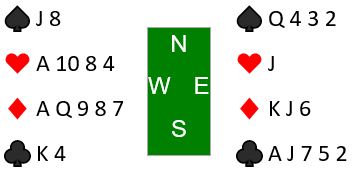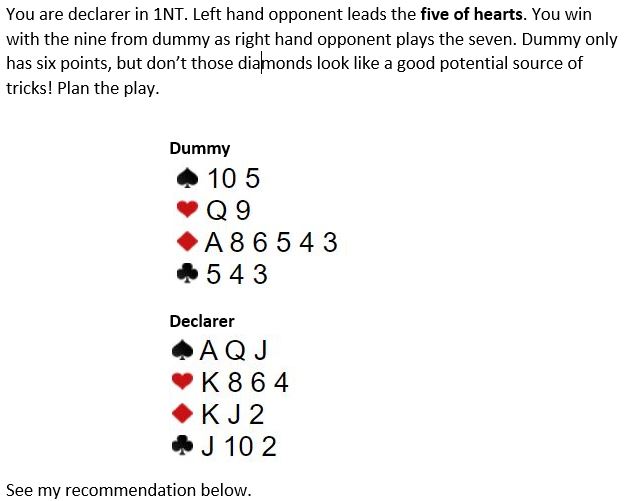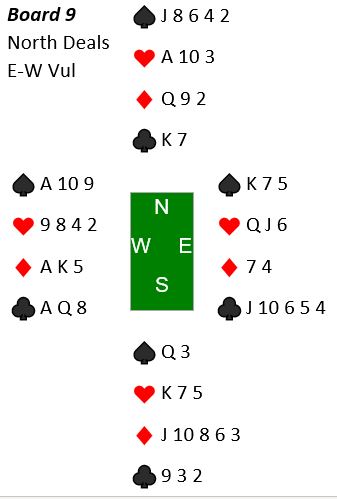Recommendation for newer players: pay attention to the hierarchy of cards in each suit during play. It’s much easier than you might think. The hierarchy itself facilitates recall of cards played (known as “watching the spots”). The idea is to keep track of cards that are rising to the top in trick taking power. Of course, practice is essential to developing the skill! But with a little practice it becomes easy.
Here is a prime example. I was North and fortunate to have a partner adept at watching the spots:
You may wonder why I decided to accept partner’s invitation to game with “only” 13 HCP. Look at my (North’s) spots: 13 HCP plus a pair of married 10s and 9s to contribute to our trick taking. Perhaps I was a bit lucky when my partner showed up with all four (yes, 4!) 8s.
Now watch what happened. Heart deuce was led, and declarer used the rule of 11 to deduce that East had at most one card higher than the eight. When East played the jack South could count three sure winners in hearts. The outstanding ace of hearts was the only card higher than those in South’s collection. When the dust settled South had come to 10 tricks: one spade, three hearts, two diamonds, and four clubs. 10 tricks on 24 combined HCP bolstered by those trick taking 10s, 9s, and 8s. Cards take tricks, not HCP points.
Watch those spots and take advantage of your intermediates. Don’t miss out on opportunities presented.
